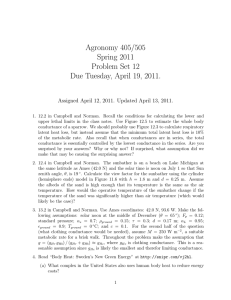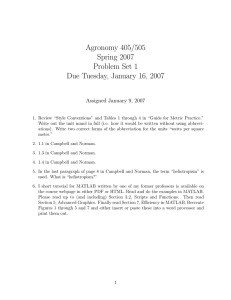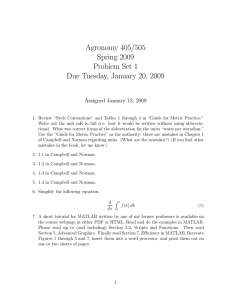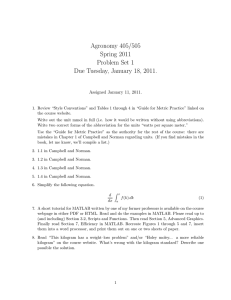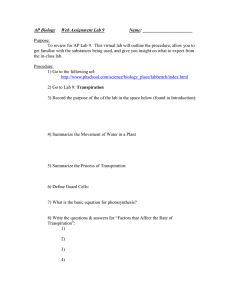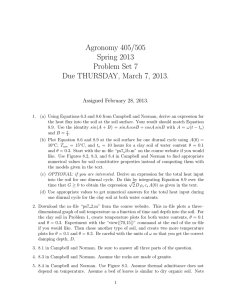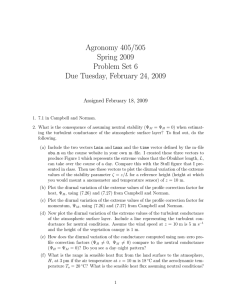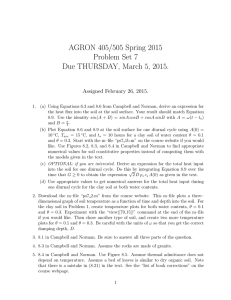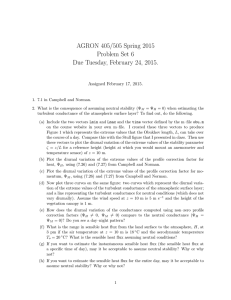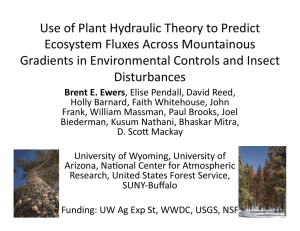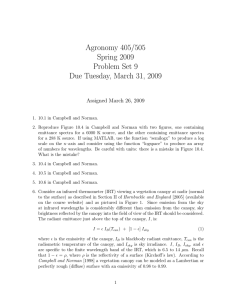Agronomy 405/505 Spring 2013 Problem Set 13 Due Tuesday, April 30, 2013.
advertisement
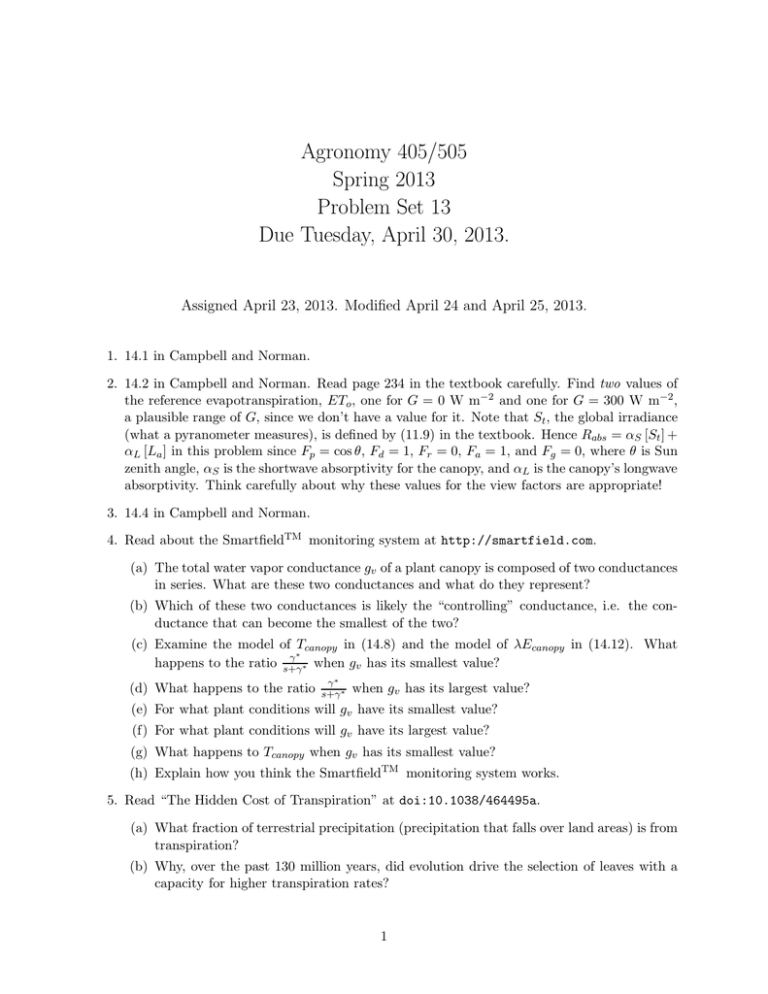
Agronomy 405/505 Spring 2013 Problem Set 13 Due Tuesday, April 30, 2013. Assigned April 23, 2013. Modified April 24 and April 25, 2013. 1. 14.1 in Campbell and Norman. 2. 14.2 in Campbell and Norman. Read page 234 in the textbook carefully. Find two values of the reference evapotranspiration, ETo , one for G = 0 W m−2 and one for G = 300 W m−2 , a plausible range of G, since we don’t have a value for it. Note that St , the global irradiance (what a pyranometer measures), is defined by (11.9) in the textbook. Hence Rabs = αS [St ] + αL [La ] in this problem since Fp = cos θ, Fd = 1, Fr = 0, Fa = 1, and Fg = 0, where θ is Sun zenith angle, αS is the shortwave absorptivity for the canopy, and αL is the canopy’s longwave absorptivity. Think carefully about why these values for the view factors are appropriate! 3. 14.4 in Campbell and Norman. 4. Read about the SmartfieldTM monitoring system at http://smartfield.com. (a) The total water vapor conductance gv of a plant canopy is composed of two conductances in series. What are these two conductances and what do they represent? (b) Which of these two conductances is likely the “controlling” conductance, i.e. the conductance that can become the smallest of the two? (c) Examine the model of Tcanopy in (14.8) and the model of λEcanopy in (14.12). What γ∗ happens to the ratio s+γ ∗ when gv has its smallest value? (d) What happens to the ratio γ∗ s+γ ∗ when gv has its largest value? (e) For what plant conditions will gv have its smallest value? (f) For what plant conditions will gv have its largest value? (g) What happens to Tcanopy when gv has its smallest value? (h) Explain how you think the SmartfieldTM monitoring system works. 5. Read “The Hidden Cost of Transpiration” at doi:10.1038/464495a. (a) What fraction of terrestrial precipitation (precipitation that falls over land areas) is from transpiration? (b) Why, over the past 130 million years, did evolution drive the selection of leaves with a capacity for higher transpiration rates? 1
